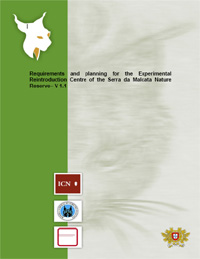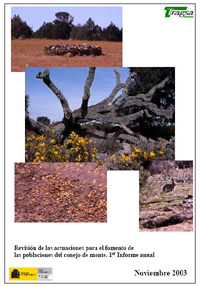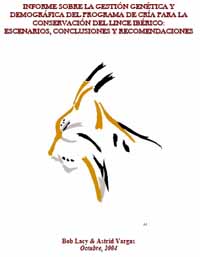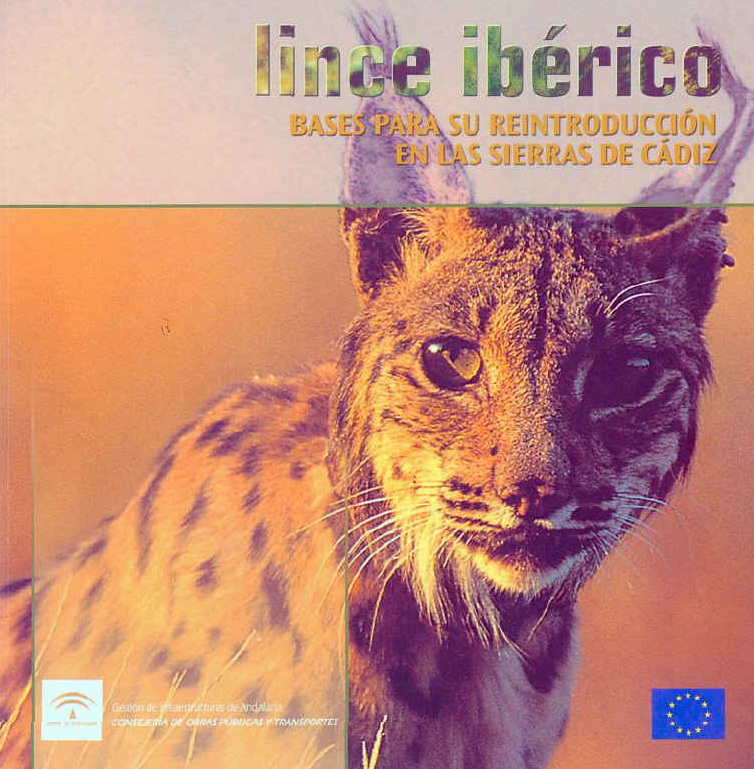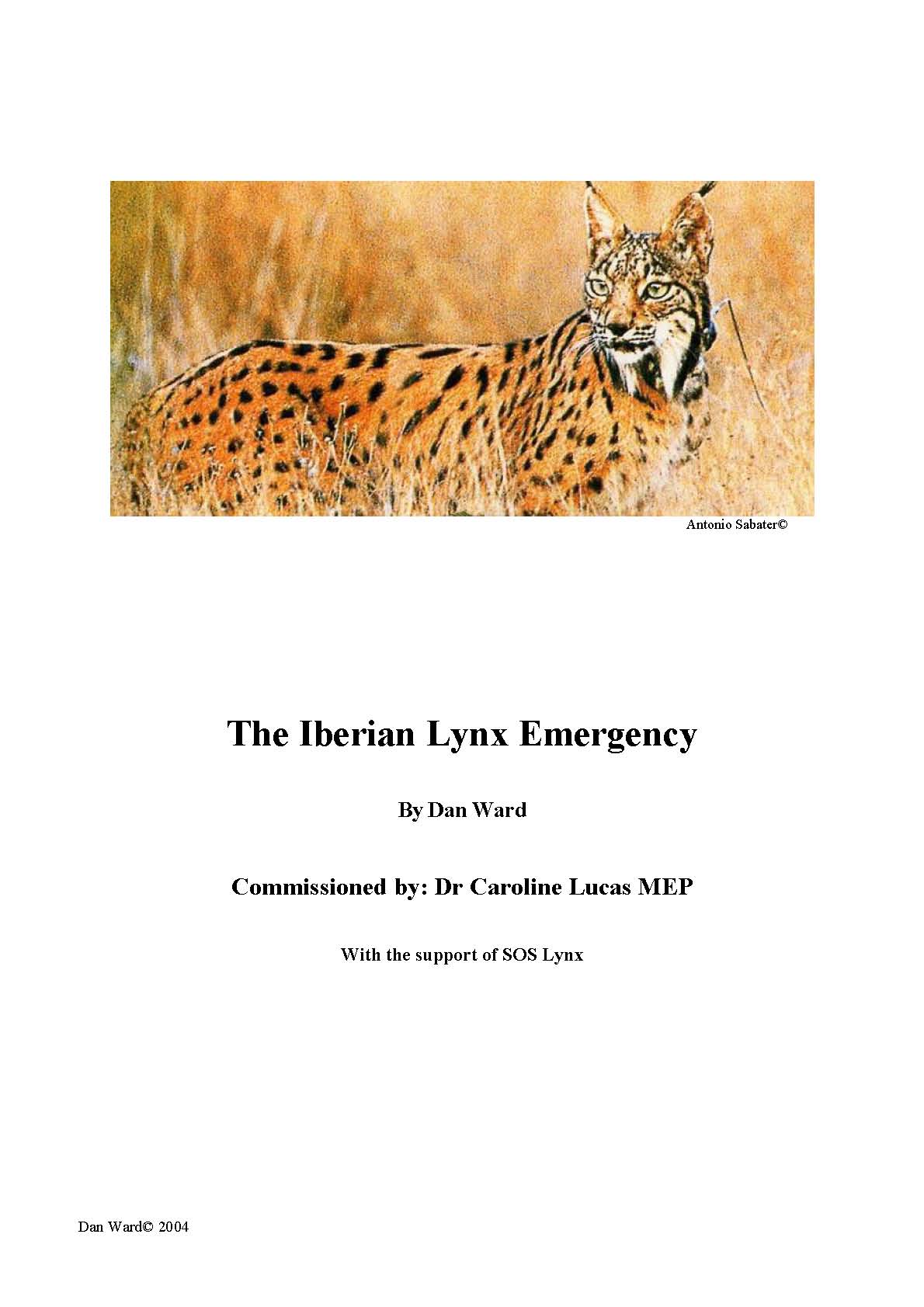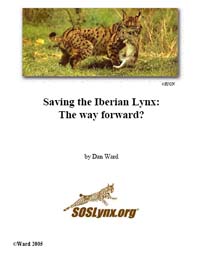|
Beaufoy, G. 1999. A last chance for the Iberian lynx? WWF Report: 1-8. |
|
The WWF Campaign for Europe's Carnivores. The plight of Europe's large carnivores has become an issue of increasing conservation concern. They continue to be persecuted by humans, and in many cases their habitats are under threat. While the precarious status of Asia's tigers is widely known, some of Europe's own top predators are in danger of quietly disappearing. Others face an upsurge in conflict with people as they attempt to reclaim parts of their former ranges. The WWF-UK Campaign for Europe's Carnivores aims to raise funds and awareness to support selected carnivores in Europe. None is in greater peril than the Iberian lynx. |
|
Célio Alves, P. and Ferreira, C. 2004. Protocolo de Colaboração no âmbito do projecto "Revisão do Livro Vermelho dos Vertebrados de Portugal". Linha de Acção 3) Determinação da abundância relativa das populações de coelho-bravo (Oryctolagus cuniculus algirus) em Portugal Continental: 1-32. Centro de Investigação em Biodiversidade e Recursos Genéticos CIBIO, ICETA - Universidade do Porto. |
| Determination of the relative abundance of rabbit populations in continental Portugal. |
|
|
||
|
Cunha Serra, R., Sarmento, P.,
and Cruz, J. 2005. |
|
|
The present document intends
to establish a blueprint for an experimental reintroduction centre to link the
network of captive breeding centres and future reintroductions, linking ex-situ
conservation and ex-situ conservation efforts. The centre will be
scientifically oriented to safely test the release strategies and protocols
proposed by the Reintroduction Working Group of the Iberian Lynx Captive
Breeding Committee, and launch future Iberian lynx reintroductions in the Serra
da Malcata Nature Reserve. |
||
| © R. Cunha Serra et al. |
|
|
||
|
García, F. J. 2003. |
|
|
|
The report compiles the work
realized during the first year of work on the rabbit Oryctolagus cuniculus and
the revision of the realized actions for the support of its populations and the
restoration of its habitats, with special interest in the efforts made in the
Spanish lynx areas. | ||
| © F.J. García |
|
Heredia, B., Gaona, P.,
Vargas, A., Ellis, S., and Seal, U. S. (Eds.) 1999. |
|
The lack of knowledge on the criteria for the conservation of lynx and the increasing concern for the future of the species are the motives who made the Ministry of Environment contact the Caprive Breeding Specialist Group and the Cat Specialist Group of IUCN to carry out a workshop on a PHVA (Population and Habitat Viability Analysis) for the species. From February 22-24, 1998 50 participants from 4 countries met in the National Park of Cabañeros in Spain with the aim to revise and develop strategies for the conservation for the Iberian lynx. |
|
Heredia_et_al_1999_Taller_analisis_de_la_viabilidad_de_poblacion_y_del_habitat.pdf |
|
|
||
|
Lacy, B. and Vargas, A. 2004. |
|
|
|
| ||
| © B. Lacy & A. Vargas |
|
Pena, L. F. 2003. Prospección del suroeste de Badajoz para la localización de zonas con presenciade lince ibérico (Lynx pardinus). Report: 1-23. |
|
Pena_2003_Prospeccion_del_suroeste_de_Badajoz_para_presencia_de_lince.pdf |
|
|
||
|
Pitcher, J. 2001. Iberian Lynx: Conservation threats and management solutions: 1-37. This paper will explore the situational factors surrounding the demise of the Iberian lynx population in Spain. First, the paper explores the physical and cultural characteristics of the study area that provides the geographical context for lynx conservation. Second, the biology of the Iberian lynx is examined since it is key to understanding the dynamics of lynx populations. Third, threats to the conservation of Iberian lynx are investigated due to the multitude of hazards confronting the lynx population, which effectively counter conservation efforts. Fourth, solutions are ascertained that may capacitate the timely address of the lynx decline. There are a multitude of strategies and approaches to managing the lynx decline that provides hope for the dwindling lynx population. Fifth, the role of humans is considered since people are critical to the political process called "wildlife management" and also since humans have an ethical/moral responsability to secure the intrinsic value of living things. Finally, the future of the Iberian lynx in the face of unfolding adversity is contemplated. |
|
|
Pitcher_2001_Iberian_lynx_conservation_threats_and_management_solutions.pdf |
||
|
© J. Pitcher |
|
|
||
|
|
|
| © A. Rodriguez et al. | ||
|
|
||
|
Sarmento, P., Cruz, J., and
Tarroso, P. 2003. |
|
|
|
Serra da Malcata, a protected
area created in 1981 for conserving natural habitats and priority species, such
as the Iberian lynx, constitutes a top priority area for future reintroduction.
Within this context, it is necessary to undertake intensive measures of habitat
recovery and prey species increasing, in order to make long-term Iberian lynx
reintroduction possible. The current project has as main goal the development
of an integrated Iberian lynx ecosystem recovery process in order to achieve
the following objectives: 1. Manage the lynx ecosystem in order to optimise its
suitability for the species; 2. Increase wild-rabbit density; 3. Control human
persecution; 4. Contribute towards the increase of public awareness towards the
species' conservation; 5. Augment scientific knowledge on the lynx, preys and
other elements of the Mediterranean ecosystem. |
||
| © C. Carrapato / P.Sarmento et al. |
|
Smit, C. J., and van
Wijngaarden, A.1976. |
|
Information on the distribution, characteristics, biology, status per country, threats and conservation measures of Felis silvestris, Lynx lynx, Lynx pardina, Panthera pardus, and Panthera tigris. |
|
Smit_&_Van_Wijngaarden_1976_Threatened_mammals_in_Europe.pdf |
|
|
||
|
Ward, D. 2004. The Iberian Lynx Emergency: 1-67. Commissioned by Caroline Lucas MEP, With the support of SOS Lynx. This report provides a broad and up-to-date overview of the emergency situation of the Iberian Lynx, based upon interviews with lynx experts from governmental, nongovernmental and international organisations, and a review of available literature. Ward_2004_The_Iberian_lynx_emergency.pdf |
|
|
|
| ||
| © A. Sabater / D. Ward |
|
|
||
|
Ward, D. 2005. Saving the Iberian Lynx: The way forward? Report, SOS Lynx: 1-13. This report provides an update on the Iberian Lynx, and issues in lynx conservation, drawing particularly upon information presented at a recent International Seminar on the Iberian Lynx held in Cordoba, Spain in December 2004. More details about the lynx and the history of its decline and conservation can be found in the previous "Iberian Lynx Emergency" report available from the SOS Lynx website [or above, respectively]. |
|
| © D. Ward |
|
|
||
|
Ward, D. 2005. Reversing Rabbit Decline. One of the biggest challenges for nature conservation in Spain and Portugal. Report: 1-54. This report aims to: raise the profile of the European Rabbit, its importance and decline in Spain and Portugal, at national and international levels; provide those interested in rabbit conservation with up-to-date information on the status, conservation and barriers to the conservation of rabbits in Spain and Portugal; provide recommendations for ways to improve rabbit conservation in the future, and; act as a "briefing document". The report does not represent new research, but is rather a compilation of existing information and expert opinions. |
|
|
Press release: Rabbit decline threatens endangered predators and
eco-systems. |
|
|
||
|
Farmer, L., Brewerton, N., and
Rankine, C. 1999. Europe's carnivores - A conservation challenge for the 21st century. WWF-UK report: 1-28. Distribution, Biology, Threats, Conservation Solutions, Survival prospects in Europe for the 21th century for the Iberian lynx, Eurasian lynx, Grey wolf, Brown Bear, and Wolverine. |
|
| © WWF-UK |
